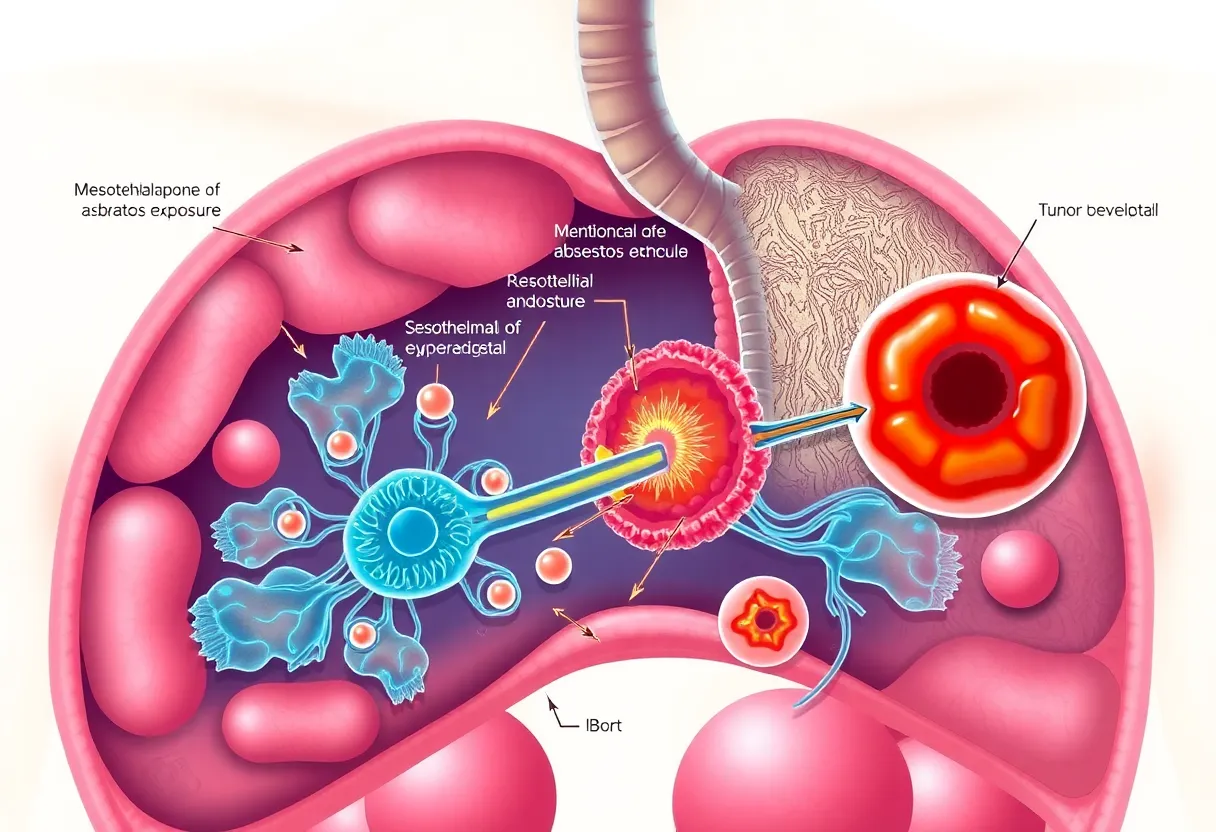The Science Behind Mesothelioma: Causes and Effects
Understanding Mesothelioma
Mesothelioma is an aggressive form of cancer primarily associated with exposure to asbestos. This rare cancer affects the thin layer of tissue covering the lungs, abdomen, or heart, known as the mesothelium. The science of mesothelioma reveals critical insights into its causes and effects, emphasizing the urgent need for awareness and prevention.
Causes of Mesothelioma
Asbestos Exposure
The primary cause of mesothelioma is exposure to asbestos, a naturally occurring mineral once widely used in construction and manufacturing because of its fire-resistant properties. When asbestos fibers are inhaled, they can lodge in the mesothelium, leading to inflammation and, eventually, cancer.
Occupational Exposure
Many individuals at high risk of developing mesothelioma are those who worked in industries involving asbestos use. Construction workers, shipyard workers, and insulation manufacturers are among the most affected groups. Additionally, family members of workers can also be at risk due to the transport of asbestos fibers on clothing.
Environmental Exposure
In some cases, people are exposed to asbestos in their homes or communities, particularly if they live near asbestos mines or factories. Natural deposits of asbestos may also lead to environmental contamination, posing risks to the residents.
Risk Factors
Age and Gender
Mesothelioma is more prevalent among older individuals, typically occurring in people aged 65 and above. Men are diagnosed more frequently than women, likely due to historical occupational roles that placed them at higher risk for asbestos exposure.
Genetic Factors
Recent studies suggest that genetic predisposition may also play a role in developing mesothelioma. Certain genetic mutations may increase susceptibility when combined with asbestos exposure.
Other Environmental Factors
Research indicates that prolonged exposure to other carcinogenic substances, such as radiation or certain chemicals, may contribute to an increased risk of mesothelioma. However, asbestos remains the most significant risk factor.
The Pathophysiology of Mesothelioma
Cellular Mechanisms
At the cellular level, asbestos fibers can cause damage to mesothelial cells. They trigger biological responses that lead to cellular inflammation and mutation. Over time, this persistent inflammation may result in the development of malignant tumors.
Stages of Mesothelioma
Mesothelioma is classified into different stages, which influence treatment options and prognosis. Staging considers tumor size, spread to lymph nodes, and metastasis to other organs. Early-stage mesothelioma generally has a better prognosis than later stages, which may require more aggressive treatment.
Symptoms of Mesothelioma
Common Symptoms
Symptoms of mesothelioma may take decades to appear after initial asbestos exposure. Common symptoms include:
- Chest pain
- Shortness of breath
- Persistent cough
- Weight loss
- Abdominal swelling or pain
Diagnosis
Diagnosing mesothelioma can be complicated due to its nonspecific symptoms. Healthcare professionals typically use imaging tests, tissue biopsies, and fluid analysis to confirm the presence of the cancer. Early diagnosis is crucial for improving patient outcomes.
Treatment Options
Surgery
Surgical intervention may be viable for patients with early-stage mesothelioma. Procedures could involve the removal of the tumor, part of the lung, or even the entire lung in advanced cases. However, surgery may not always be the best option for later stages.
Chemotherapy
Chemotherapy is a common treatment modality, often used in conjunction with surgery or as a standalone therapy. It utilizes powerful drugs to target rapidly dividing cancer cells, potentially reducing tumor size before surgery or controlling symptoms in advanced stages.
Radiation Therapy
Radiation therapy employs high-energy rays to kill cancer cells. It may be used as an adjunct treatment to surgery or as palliative care to relieve pain and discomfort.
Prognosis and Survival Rates
Prognosis for mesothelioma varies significantly based on several factors, including the stage at diagnosis, the patient’s overall health, and the response to treatment. The overall five-year survival rate for mesothelioma is poor, averaging around 9%. However, some patients, especially those diagnosed in earlier stages, can achieve longer survival rates following treatment.
Support and Resources
Patient Support Groups
Due to the challenges posed by a mesothelioma diagnosis, support groups can provide emotional help and resources for patients and their families. These organizations often offer information on treatment options, legal rights, and financial assistance.
Legal Advocacy
Many victims of mesothelioma seek legal recourse against companies responsible for asbestos exposure. Legal advocacy groups specialize in representing mesothelioma patients, helping them pursue compensation for medical expenses, lost wages, and other damages.
Prevention and Awareness
Preventing mesothelioma largely focuses on reducing asbestos exposure. Public awareness campaigns are essential in educating the public about the risks associated with asbestos. Occupational safety regulations are critical in minimizing asbestos exposure in workplaces.
Regulatory Measures
Various countries have enacted regulations to limit asbestos use and exposure. While some have outright banned asbestos, others have stringent regulations to ensure safe handling and removal protocols in existing structures.
Conclusion
The science behind mesothelioma underscores the importance of understanding its causes and effects. Increased awareness and preventive measures can protect vulnerable populations from this devastating disease. Continuing research into the links between asbestos and mesothelioma remains crucial for developing improved treatments and supportive care for those affected.
Further Reading
For those interested in delving deeper into the science of mesothelioma and cancer causes, numerous resources are available. Academic articles, professional organizations, and healthcare providers can offer valuable insights into ongoing research and support initiatives.



















